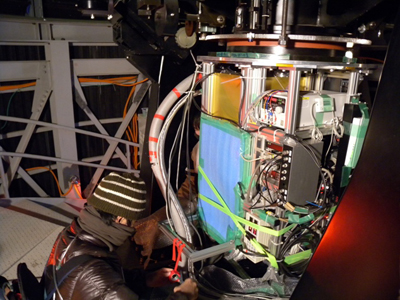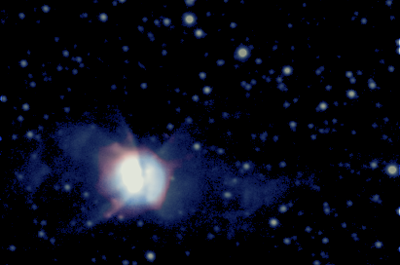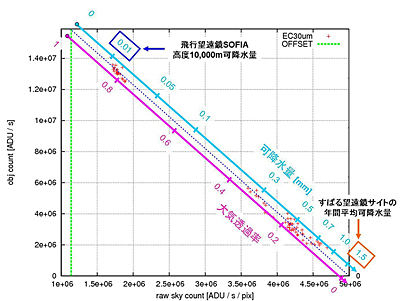
|
TAO Project |
|
The TAO project

|
Successful in obtaining images of planetary nebula NGC6302 in the 30 micron bandKentaro Asano, who is a 2nd-year master's degree student and a member of development team of MAX38, mid infrared instrument for the mini-TAO telescope, has successfully obtained images of planetary nebula NGC6302 at 31 microns and indicated that the Chajnantor site is suitable for infrared observations beyond early exception. The research results have been published as a master thesis. On 3 February 2011, Kentaro Asano has presented the observation results in the review meeting for the master thesis held at Koshiba hall of the University of Tokyo and received a master's degree.
Image of planetary nebula NGC6302 at 31 micronsIn this study, infrared light at 31 microns radiated from low-temperature and very-dense dust around a central star of planetary nebula NGC6302 has been successfully detected for the first time with the mid-infrared instrument MAX38. The observation results provide important clues for deriving origins of dust in the Milky Way Galaxy. In Figure 2, an image of Pa-beta line taken by the near-infrared instrument ANIR and an image at 31 microns taken by the mid-infrared instrument MAX38 are presented in blue and red, respectively.
Atmospheric transmittance measured at the summit of ChajnantorGround-based observations in the 30 micron band is not easy because light from stellar objects is strongly affected by earth's atmosphere. The mini-TAO telescope at 5,640-m altitude can drastically reduce the influences by the atmosphere. In this study, it has been confirmed that the atmospheric transmittance above the summit of Chajnantor is drastically changed in a short time and found out that the time variation is caused by variation of a precipitable water vapor (PWV). This study has indicated that the atmospheric transmittance reaches to 80 % at 31 microns, corresponding to 0.05 mm in PWV, in the best condition. This is a surprising result. The PWV of 0.05 mm is close to that at 10,000-m altitude where the telescope on-board an airplane, Stratospheric Observatory for Infrared Astronomy SOFIA, operated by NASA carries out observations. Comparing the yearly average value of PWV of 1.5 mm at the summit of Maunakea in Hawaii where Subaru telescope is observing, the summit of Chajnantor is extremely dried site suitable for infrared observations. Figure 3 shows relationship between sky brightness at 31 microns (horizontal axis) and apparent stellar brightness (vertical axis). The atmospheric transmittance at 31 microns and PWV are derived from the relationship of the both brightnesses and are presented along red and blue axises, respectively. Data values obtained within 3 hours in the day are plotted in red crosses distributing around 10 to 30 and 80 % of atmospheric transmittance. This figure presents that the atmospheric transmittance at 31 microns is drastically changes in a short time.
Copyright(c) 2007-2015 TAO Project, Institute of Astronomy, Graduate School of Science, University of Tokyo
|
||||||||||


